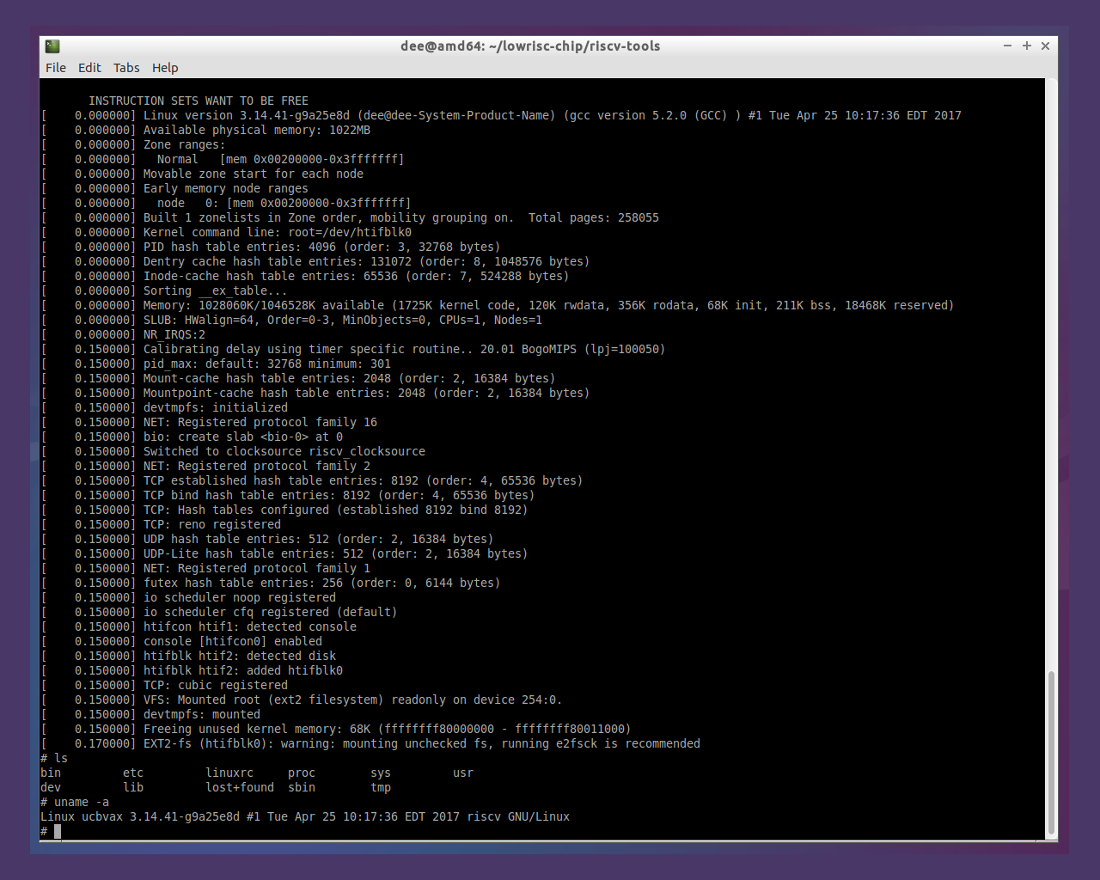Running Linux On Fpga
Running on the FPGA. In this final step, we want to test the debug functionality on an FPGA board. The debug system will use the UART connection at 12 MBaud to communicate with the debug system. Run the pre-built FPGA demo with a trace debugger. The files you may need: nexys4ddrfpgadebug.bit: The debug enabled FPGA bitstream.
- Running Linux on FPGAs Modern FPGA boards often have either a real CPU that can interface the FPGA logic (also called hard cores, most often PowerPCs) or at least enough resources to emulate a whole CPU in FPGA logic (so called soft cores ), which are bit slower than hard cores.
- This is the Linux kernel with a root file system (initramfs) attached to it. We will use this file to boot Linux on Skoll Kintex 7 FPGA Module. Running Linux on Skoll. Step 1: Copy the Linux image and place it in a convenient directory and open Xilinx SDK.
Hello Dear All,
I would like to use AXI DMA in order to pass data to my custom ip. I think it is not a hard job for bare metal applications(an example tutorial: http://www.fpgadeveloper.com/2014/08/using-the-axi-dma-in-vivado.html) however, I couldn't find any complete guide to use AXI DMA in Linux. I am trying to put pieces together but I couldn't do what I want so far.
Would you please help me with that, do you have any suggestion or do you know any sources related to this subject?
Thanks,
I have a DE1-SoC FPGA running Ubuntu 16.04 via the microSD card. I'm somewhat new to the device-tree, but have managed to figure out somewhat how to enable the various peripherals on the board by decompiling the .dtb file into a .dts file using dtc. I did that and edited the .dts file in nano to change the SPI ports from 'disabled' to 'okay'. I then recompiled the .dtb file from the modified .dts file (I also erased the .dts file and re-decompiled a second .dts file to see if the changed took affect, and they did).
At this point, I reboot the system, and go to cd/dev/ but there is not spidev or spi* or spidev* listed. When I go to cd/proc/device-tree, I have the following listed:
And when I navigate to the /soc/ folder, I have the following, which is consistent with the .dts file I have:
Running Linux On Fpga Mac
So, I'm not sure what I'm doing wrong that my serial peripheral interfaces are not working. The end goal: the SPI on the FPGA connects to an onboard ADC (AD7928), which I would like to access via Linux using a program written in C. The i2C work fine, but for some reason the SPI is not responding.
I think I might be missing a step, but at this point I am kinda lost so any help would be great.
EDIT: Forgot to add the .dts entry for the SPI:
And the addresses are consistent with the board's datasheet for the SPIM.
Made a little leeway by adding editing the .dts some more:
Now spidev32766.0 is showing up in my /dev/ folder.
Linux Fpga Development
1 Answer
spidev32766.0 is device node you got after you added device tree nodespidev@0 for SPI device on first SPI bus (controller) spi@fff00000Star wars rebels png. with chip select 0.
Frequency property spi-max-frequency = <0xb71b00> by convention should be put in decimal format 12000000, instead of hex, and in new versions of spidev.c, driver will complain about compatible = 'spidev' property, as this property should describe real HW not some SW abstraction.
This 32766 bus(controller) number is dynamically allocated by the Kernel and is completely legal.In older Kernels, before device tree files, bus number had to be defined in board file platform data e.g.: .bus_num = 0,
As previously said there are no SPI bus(controller) device nodes spiX under/dev filesystem, only clients(chip) device nodes spidevX.Y.

spidev.c is a special kind of driver which is registered for generic SPI client(chip) devices, and it's main goal is to export Kernel low level SPI API to userspace, by creating character device nodes under /dev interface.
But if your goal is SPI driver for ADC, maybe it is better to use a existing Linux SPI driver for that chip, like e.g. for AD7791, or to write your own.Linux provides support for Industrial I/O Subsystem (iio) devices like analog to digital converters.
In that case Linux will export your ADC device functionality to userspace in /sys filesystem:
with device attributes accessible as files: